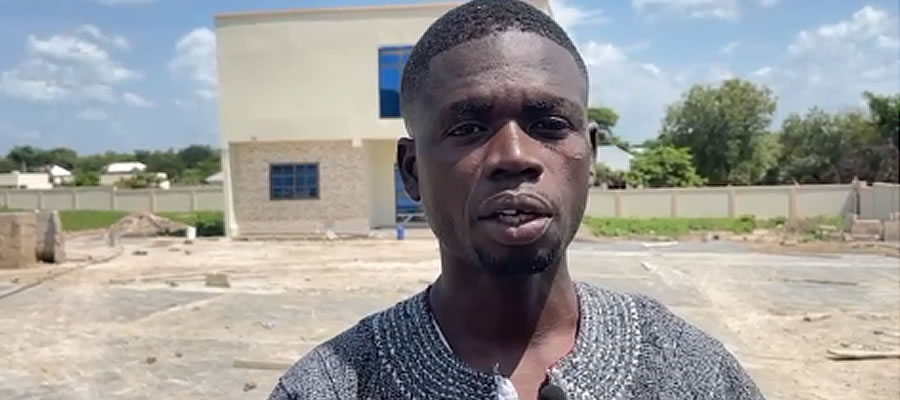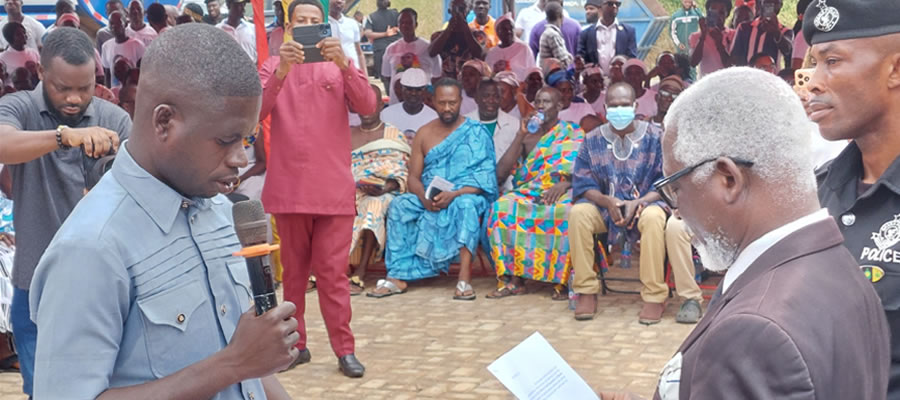

Location and Size
The Banda District lies within latitudes 7oand 8o 45` north and longitudes 2o 52` and 0o 28` west. In terms of land area, the district covers a total of 2,298.3 square kilometres out of the region’s size of 39,558 square kilometers. The district shares boundaries with the Bole District (Northern Region) to the north, Tain District to the south, La Cote d’Ivoire to the east and Kintampo South District to the west.
Climate, rainfall and drainage
The prevailing climatic conditions in the district constitute important parameters for development. The temperature in the Banda District is generally high averaging about 24.5oC (779oF) throughout the year (Benneh and Dickson, 1970). Average maximum temperature is 30.9oC and minimum of 21.2oC with the hottest months being February, March and April.
With an average annual rainfall between 1,140 and 1,270mm, the district has a double rainfall regime. The major rainy season occurs between April and July and the minor rainfall period occurs between September and November. Following the minor rainy season is the dry season, which starts in late November and ends in March. Relative humidity in the district is also quite high averaging over 75.0 percent throughout the year. Humidity is high in the wet months and low in the dry months.
The rivers which drain the district are Tain, Tombe, Chin, Sidoo, Lepla, Kuhuli, Jinde, Yooloo, Fini, Seeloo and Gojongo. Some of the rivers dry up during the dry season but River Tain flows throughout the year. The Black Volta marks the northern boundary of the district (and that of BAR) with the Northern Region. This river also flows throughout the year and as a result, the second largest hydroelectric dam (Bui Dam) in Ghana has been constructed, which supports the national grid with 400 megawatt (MW) of power.
The Bui Dam, the construction of which began in January 2008 and fully became operational in December 2013, was built across the Black Volta River at the Bui Gorge, at the southern end of the Bui National Park. It is located on the border between the Brong Ahafo and Northern regions. The dam serves as a tourist attraction site which will attract a lot of people into the district. As a multipurpose dam, it provides water for irrigation and also improves the fishing industry in Ghana. This is likely to lead to the creation of employment avenues for those within or outside the district.
Ground water potential in the district is highly viable and this has accounted for the construction and high dependence on boreholes for water supply. There is also a high stretch of Table Mountains known as escarpment with valleys which serve as basins to the tributaries of the Black Volta River.
Vegetation
The Banda District lies within the Moist Semi-Deciduous Forest and the Guinea Savannah woodland vegetation zones. Timber species like Odum, Sapele, Wawa and Mahogany are found in places such as Dorbor and Bongase. Wildlife like the deer, hippopotamus and antelope are found in the Bui National Park. Other forest reserves in the district are Sawsaw, Yaya and Bawa Watershed. The combination of the vegetation zones – Guinea Savannah and the Forest permit the cultivation of a variety of crops – cereals, tubers and vegetables; and animal rearing.
The forest reserves and the few groves around the water bodies in the district help protect the Black Volta and Tain rivers from excessive evapo-transpiration.
Date Created : 12/5/2017 1:40:17 AM













 facebook
facebook
 twitter
twitter
 Youtube
Youtube
 +233 593 831 280
+233 593 831 280 0800 430 430
0800 430 430 GPS: GE-231-4383
GPS: GE-231-4383 info@ghanadistricts.com
info@ghanadistricts.com Box GP1044, Accra, Ghana
Box GP1044, Accra, Ghana